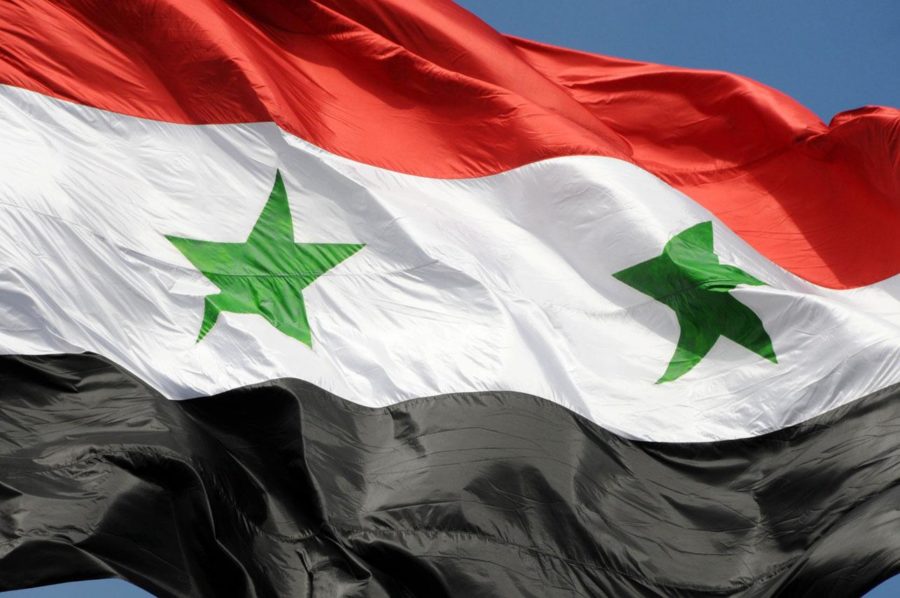A young man from Syria came to Santa Rosa Junior College in December 2009 to pursue his degree in robotics and engineering. He had left the college of Damascus to finish his graduate work overseas, with the intent to return to Syria and share his knowledge. But by summer 2010, civil war broke out in the place he called home, delaying his return.
Working on his graduate degree in robotics at UC Berkeley, the young man, who wished to remain anonymous, revisited SRJC Sept. 7 to hold an objective lecture about the various factions that comprise the Free Syrian Army and its ongoing conflict with Syrian president Bashar al-Assad.
Program engineering professor Vince Birch worked with the student while he studied at SRJC. “It was my good fortune to have [him] to help out. He’s hard working, congenial and a very good guy,” Birch said. The physics department hosted the lecture, stressing the event is not about political statements, but information. The lecture included the BBC documentary “A History of Syria,” an explanation of Syria’s impact through history and the major elements of the Syrian civil war.
“I don’t think the Western media is giving a fair representation of the news,” said SRJC physics professor Linda Williams. “When we were in school, we had teach-ins: big assemblies with panel discussions from the faculty about all sides of the issue. We need this information.”
In spring 2010, Middle Eastern countries including Egypt, Tunisia, Libya, Yemen and Syria began protesting their respective governments. The period of revolution became known as the Arab Spring.
Each country achieved different measures of revolution: Egypt managed to oust 30-year president Hosni Mubarak; Zine el-Abidine Ben Ali no longer holds controlling interests in Tunisia; Muammar Ghadafi’s death at the hands of the Libyan military ended his regime in the war-torn nation and while Yemen transferred power from former president Ali Abdullah Saleh to a unified national government, Al Qaeda operates without reprisal within its borders.
But Syria remains in an open state of conflict. Currently, two main factions fight for power. The Alawites, a minority Islamic group that holds Syria’s political power through President Assad, receive support from the Libyan Hezbollah and Shiite Islamic countries like Iran and Iraq; and the Free Syrian Army, a conglomeration of Syrian citizens-turned-rebels, who receive support from Sunni Islamic countries like Saudi Arabia. Al Qaeda operates against the Syrian government, but its use of car bombings and civilian executions keeps them distant from the idea that the Syrian rebels fight for a democratic and non-repressive government to replace Assad.
“Democracy is not organic. You cannot just water it and let it grow. You must suffer before democracy happens,” the Syrian student said.
Currently, the Syrian civil war continues to ravage the country. According to the United Nations High Commissioner of Refugees, the fighting killed over 100,000 Syrians and forced two million refugees across the country’s neighbors. The UN claims this is “the worst crisis since the Vietnam War.”
The Zaatari camp in Jordan is the second largest refugee camp in the world, reaching city status, complete with working shops. The camp became one of the largest cities in Jordan due to the massive flow of refugees seeking asylum. More than 120,000 refugees live in the camp. According to a UNHCR video detailing the camp, workers plan to create more houses to shelter 150,000 more Syrian citizens in the event United States intervention forces the people out.
President Barack Obama addressed the United States Aug. 30 to announce his plans for a limited military intervention in Syria. “Now, after careful deliberation, I have decided that the United States should take military action against Syrian regime targets. This would not be an open-ended intervention. We would not put boots on the ground. Instead, our action would be designed to be limited in duration and scope. But I’m confident we can hold the Assad regime accountable for their use of chemical weapons, deter this kind of behavior, and degrade their capacity to carry it out,” he said.
The president refers to a confirmed use of nerve gas and chemical weapons against the Syrian people 10 days prior to this announcement. He also said there is proof linking the Syrian government as the perpetrators behind the chemical attack.
Assad denies all claims that his government used chemical weapons, instead blaming Al Qaeda for deploying the chemicals. Chemical experts deployed by the UN are working to confirm the areas affected by the chemical attacks.
The UN banned the use and possession of chemical weapons in 1997. If the Syrian government is responsible for their resurgence now, it would be in violation of this treaty.
SRJC student Jamie Kitchel came to learn more about why events in Syria will effect decisions in the U.S. “There is an ignorance in this generation to world events that affect us. I understand a lot more [about Syria]. A lot of people don’t realize the depth of the Middle East and what it means to us,” Kitchel said.
The Syrian student wants to return to Damascus. While his brother came to the United States to study economics, his family continues to live in the country. When the country stabilizes, he plans to use his knowledge of engineering and robotics to construct a higher education school for upcoming engineers, hoping to help rebuild the country from the ground up. “What do I miss most about Syria? Peace. It’s really painful to see neighborhoods we grew up in being destroyed. I miss my family. Maybe in the future, I can take my friends here to Syria,” he said.


